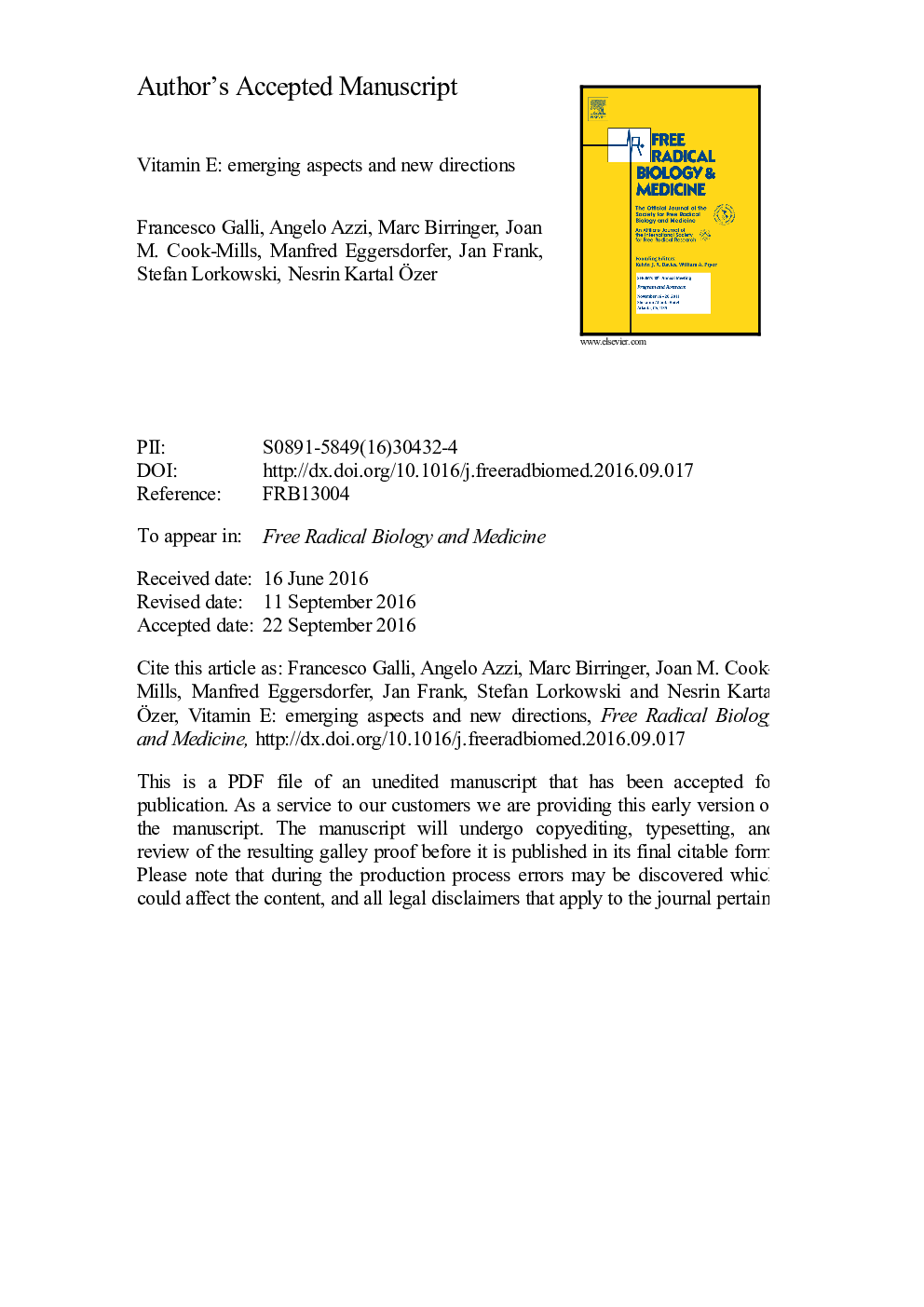| کد مقاله | کد نشریه | سال انتشار | مقاله انگلیسی | نسخه تمام متن |
|---|---|---|---|---|
| 5501984 | 1534941 | 2017 | 66 صفحه PDF | دانلود رایگان |
عنوان انگلیسی مقاله ISI
Vitamin E: Emerging aspects and new directions
دانلود مقاله + سفارش ترجمه
دانلود مقاله ISI انگلیسی
رایگان برای ایرانیان
کلمات کلیدی
موضوعات مرتبط
علوم زیستی و بیوفناوری
بیوشیمی، ژنتیک و زیست شناسی مولکولی
سالمندی
پیش نمایش صفحه اول مقاله

چکیده انگلیسی
Absorption, transport and metabolism of vitamin E and long-chain metabolites of vitamin E. The route of all vitamin E forms follows in principle the pathway of other lipid species. In the intestine, vitamin E and other lipids are packed into micelles, which are taken up via receptors. In intestinal epithelial cells, vitamin E is incorporate into nascent chylomicrons or HDL via the ATP-binding cassette transporter ABCA1. In the blood, vitamin E follows the lipoprotein transport route of other lipids and is transported either to extrahepatic tissues or to the liver. The transport of vitamin E occurs via chylomicron remnants, intermediate-density, low-density or high-density lipoproteins. In the liver, vitamin E undergoes several sorting steps that direct the different forms of vitamin E either to the catabolic route or to nascent lipoproteins via partly unknown mechanisms. The α-tocopherol transfer protein (α-TTP) discriminates between the different forms of vitamin E in favor of α-tocopherol, thus protecting it from excessive cytochrome P450-mediated catabolism and excretion as α-carboxyethyl-hydroxychroman (α-CEHC). On the contrary, non-α-tocopherol forms are preferentially handled as xenobiotics and final degradation products, namely CEHCs, are found as sulfate and glucuronide conjugates in urine and bile. The figure was modified from [20].196
ناشر
Database: Elsevier - ScienceDirect (ساینس دایرکت)
Journal: Free Radical Biology and Medicine - Volume 102, January 2017, Pages 16-36
Journal: Free Radical Biology and Medicine - Volume 102, January 2017, Pages 16-36
نویسندگان
Francesco Galli, Angelo Azzi, Marc Birringer, Joan M. Cook-Mills, Manfred Eggersdorfer, Jan Frank, Gabriele Cruciani, Stefan Lorkowski, Nesrin Kartal Ãzer,